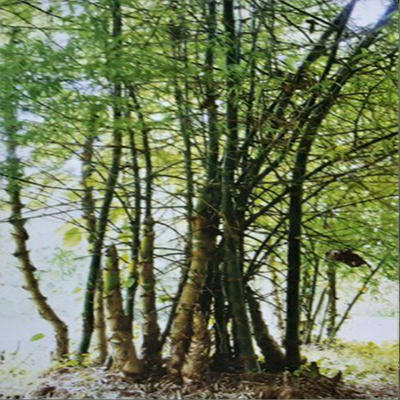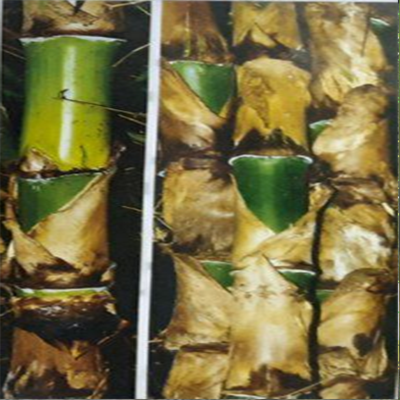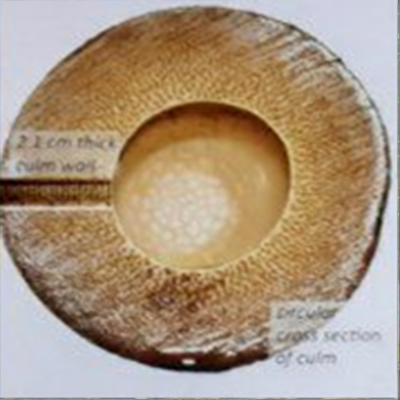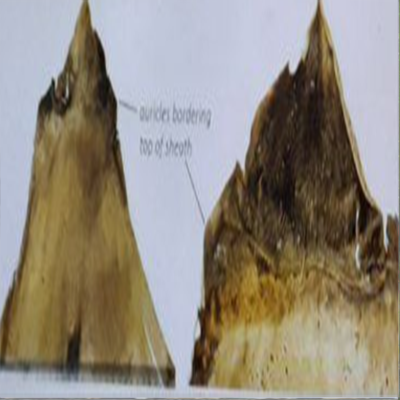04. Bambusa bambos (L.) Voss
Local names
English: Giant Thorny Bamboo or Indian Thorny Bamboo;
General description
The fast growing, strong woody culms of Bambusa bambos have an average diameter between 10-18 cm, and are between 20-30 m tall (although the tallest recorded culm measured 40 m). The internodes are dark green colored with very thick walls. Nodes are slightly swollen and some lower nodes produce short aerial roots. Nodes contain a central dominant branch with one or two lateral branches and are often spine-like. Thorny lower branches are long and wiry, and usually bent towards the ground. The upper leafy branches produce a fan like plume and bearing small spines. This bamboo species may flower every 30-50 years. Bambusa bambos seeds are generally viable for a period of 6-8 months.
Habit and Habitat
Bambusa bambos prefers a humid tropical climate and grows best along river banks or river valleys with a rich, moist soil. It reaches its best development in moist deciduous forests up to an altitude of 1,250 m and receiving nearly 2,000-2,500 mm rainfall a year. In flat alluvial soil, the culms are reported to attain a height of 25-30 m and a diameter of 20-25 cm.
Distribution
Native to Southeast Asia, to be more specific: India, Pakistan, Sri Lanka, Bangladesh, Burma, Thailand, Laos, Kampuchea, Vietnam and China.
Uses
Culms are used for house construction, scaffolding, rafters, thatching and roofing, handicrafts and art objects, basket making, bows and arrows, furniture, floating timber and rafting, cooking utensils and fencing. The raw material of this bamboo is also an important source for paper pulp and panel products. Shoots and seeds are edible and leaves are used as fodder and medicine.



